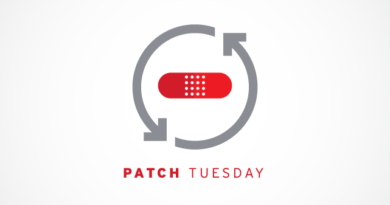LockBit Attempts to Stay Afloat With a New Version

This research is the result of our collaboration with the National Crime Agency in the United Kingdom, who recently took action against LockBit as part of an international effort resulting in the disruption of the group’s infrastructure and undermining of its operations. More details can be found on their website here.
Introduction
LockBit is a Ransomware-as-a-Service operation (RaaS) that has been involved in numerous security incidents for organizations globally over the years. By offering LockBit as a RaaS, its developers can provide it to other criminals for their own operations. In a typical RaaS setup, earnings are split between both the developers and their affiliates after the ransom has been negotiated and paid. LockBit normally charges a 20% share of the ransom per paying victim, with the remaining 80% going to the affiliate. However, if LockBit itself is the one carrying out the negotiations, this fee goes up to 30 to 50%. In November 2023, the group introduced new recommendations for ransom values based on the revenue of the victim, forbidding discounts above 50%.
From a purely technical side, what made LockBit special compared to other competing ransomware packages was that it used to have self-spreading capabilities. Once a host in the network becomes infected, LockBit is able to search for other nearby targets and to try and infect them as well, a technique that was not common in this kind of malware.
From a criminal group perspective, LockBit was known to be innovative and willing to try new things (though less so in recent times, as we will see in this entry). For instance, they came up with a public contest — a “bug bounty” — to find new ideas from the cybercriminal community to improve their ransomware. This group also developed and maintained a simple point-and-click interface that allowed a cybercriminal to choose various options before compiling the final binary for the attack, therefore lowering the technical barrier of entry for their criminal affiliates.
The group also promoted themselves through stunts in the cybercriminal community, such as paying people to get LockBit tattoos and even offering a US$1 million bounty for anyone who could find out the real-world identity of LockBit’s gang leader (an individual or group known by the online nickname “LockBitSupp”).
As part of this innovative streak, LockBit has published several versions of their ransomware, from the initial v1 (January 2020) to LockBit 2.0 (nicknamed “Red”, from June 2021), then to LockBit 3.0 (nicknamed “Black”, from March 2022). In October 2021, the threat actor introduced LockBit Linux to accommodate attacks on Linux and VMWare ESXi systems. Finally, an intermediate version, nicknamed “Green,” that incorporated code apparently inherited from the defunct Conti ransomware, emerged in January 2023. However, this version was not identified as a new 4.0 version.
In recent times, the group has experienced issues, both internally and externally, that have threatened its position and reputation as one of the top RaaS providers. This blog entry touches on these issues and provides a look into our data, which shows the group’s seeming decline over the past couple of years.
Furthermore, we will examine an in-development version of the ransomware we track as LockBit-NG-Dev (NG for Next Generation), which could be an upcoming version the group might consider as a true 4.0 version once complete. We will examine its capabilities in relation to other LockBit versions, such as the “Green” version from 2023.
A detailed technical analysis of LockBit-NG-Dev can be accessed in the appendix.
The LockBit group has had internal security incidents, due to the distributed semi-anonymous structure of the group itself and the interactions between the affiliate program members and the LockBit operators.
Information leaks by disgruntled developers or group members have occurred in the past. In September 2022, the builder for the ransomware was leaked by a developer associated with the group This leaked build had significant impact on the cybercriminal scene by lowering the threshold for criminals to start their own RaaS enterprise via clones of the LockBit operation.
When builds are leaked, it can also muddy the waters with regards to attribution. For example, in August 2023, we observed a group that called itself the Flamingo group using a leaked LockBit payload bundled with the Rhadamanthys stealer. In November 2023, we found another group, going by the moniker Spacecolon, impersonating LockBit. The group used email addresses and URLs that gave victims the impression that they were dealing with LockBit.
Read More HERE




